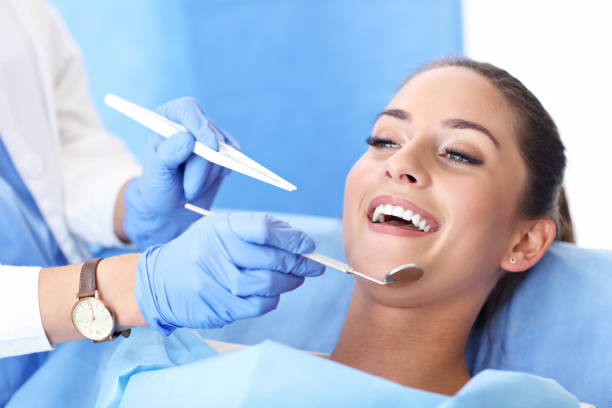The desire for a straighter smile is common among many people, but the idea of wearing traditional metal braces can be unappealing. Braces, while effective, can be uncomfortable, costly, and require a significant time commitment. This leads many to wonder if there are natural methods to straighten teeth without resorting to oral braces. In this comprehensive article, we will explore the various natural approaches to teeth straightening, examining their efficacy, limitations, and practical application.
Understanding the Causes of Crooked Teeth
Before delving into natural remedies, it is essential to understand why teeth become crooked. Several factors contribute to misalignment:
- Genetics: Like many physical traits, the alignment of teeth can be inherited from parents.
- Jaw Size: Modern diets and lifestyles have led to smaller jaw sizes, causing overcrowding of teeth.
- Thumb Sucking and Pacifier Use: Prolonged thumb sucking or pacifier use in childhood can push teeth out of alignment.
- Tongue Thrusting: This habit, where the tongue pushes against the teeth during swallowing, can lead to misalignment.
- Tooth Loss: Losing teeth due to decay or injury can cause the remaining teeth to shift.
- Poor Oral Habits: Neglecting oral hygiene can lead to periodontal disease, which can affect teeth positioning.
Natural Methods to Straighten Teeth
While traditional braces and orthodontic treatments are the most reliable methods for achieving perfectly straight teeth, some natural methods may help improve alignment or prevent further misalignment.
- Myofunctional Therapy
Myofunctional therapy involves exercises and techniques to improve the function of facial muscles, which can help correct improper tongue posture, swallowing patterns, and mouth breathing habits. This therapy can be particularly effective in children, as their bones and teeth are still developing.
- Exercises: Specific exercises can help train the tongue to rest properly on the roof of the mouth, encouraging better alignment.
- Benefits: Improved muscle function, better breathing, and potential improvement in teeth alignment.
- Limitations: May not significantly straighten teeth in adults or those with severe misalignment.
- Dental Aligners
Although not a purely natural method, clear dental aligners like Invisalign offer a less intrusive alternative to traditional braces. They are custom-made, removable, and nearly invisible, making them a popular choice for adults and teenagers.
- Advantages: Less visible than braces, removable for eating and cleaning, customized fit.
- Considerations: Still requires professional supervision, may not be suitable for severe cases.
- Teeth Tapping and Tongue Exercises
Certain natural practices, such as teeth tapping and tongue exercises, can help encourage minor adjustments in teeth positioning over time.
- Teeth Tapping: Lightly tapping teeth together can help stimulate movement.
- Tongue Exercises: Exercises that involve pressing the tongue against the roof of the mouth can help expand the upper jaw.
- Effectiveness: These methods are generally more preventative and supportive rather than curative for significant misalignment.
- Maintaining Good Oral Habits
Preventing further misalignment is crucial, especially if your teeth are only slightly crooked. Good oral habits can help maintain the current alignment and prevent worsening.
- Proper Chewing: Chew food evenly on both sides of the mouth to avoid unilateral pressure on teeth.
- Oral Hygiene: Regular brushing and flossing prevent gum disease, which can affect teeth positioning.
- Avoiding Harmful Habits: Cease habits like nail biting, pencil chewing, and using teeth as tools.
- Dietary Adjustments
A diet that supports dental health can also play a role in maintaining straight teeth. Strong, healthy teeth are less likely to shift out of alignment.
- Calcium-Rich Foods: Foods like dairy, leafy greens, and nuts strengthen teeth.
- Vitamin D: Essential for calcium absorption, found in fatty fish and sunlight exposure.
- Avoiding Sugary Foods: Reduces the risk of decay and gum disease.
- Postural Awareness
Believe it or not, your posture can impact the alignment of your teeth. Poor posture, especially of the neck and head, can affect how your jaw rests and potentially lead to misalignment.
- Proper Posture: Keep your head aligned with your spine, avoid slouching.
- Ergonomics: Ensure your workspace encourages good posture.
Natural Approaches: What to Expect
While natural methods can offer some benefits, it’s important to set realistic expectations. These approaches are generally best for:
- Minor Adjustments: Slight misalignments or preventing further crookedness.
- Children: Growing children may experience more noticeable results due to their developing bones.
- Supportive Care: Complementing professional orthodontic treatments.
When to Seek Professional Help
Despite the appeal of natural methods, they may not be suitable for everyone, especially those with significant dental issues. Professional orthodontic evaluation is crucial to determine the best course of action. Braces, clear aligners, and other orthodontic treatments have a proven track record for a reason—they provide reliable, effective results.
- Severe Misalignment: Cases of significant crowding, overbite, underbite, or crossbite.
- Persistent Discomfort: If misalignment causes pain or difficulty in eating and speaking.
- Ineffectiveness of Natural Methods: When natural methods do not yield the desired results.
Conclusion
The journey to straighter teeth can be approached from various angles. While natural methods offer a less invasive and often more comfortable alternative to traditional braces, they come with limitations. Myofunctional therapy, good oral habits, dietary adjustments, and proper posture can support dental health and minor alignment improvements. However, for more significant misalignments, professional orthodontic treatments remain the most reliable solution. If you’re considering natural methods, it is always wise to consult with a dental professional to determine the most effective and safe approach for your unique dental needs.
Remember, a healthy smile is not just about aesthetics; it’s about maintaining overall oral health. Whether through natural methods or professional Best Dentist in Karachi treatment, achieving and maintaining straight teeth contributes to better oral hygiene, improved function, and enhanced confidence.
